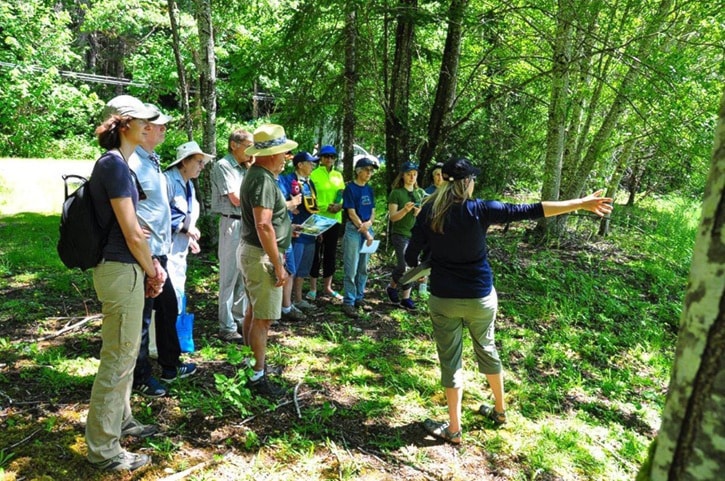Even as the dry weather conditions in the Valley continue to adversely affect water levels in Cowichan Lake, Cowichan River and many other surrounding streams and tributaries, the largest threat to riparian zones remains the impact of residential and commercial developments.
This was one of the important take-aways from the Cowichan Lake and River Stewardship Society’s riparian restoration tour, held June 4.
The “riparian zone” is where land meets a lake or river.
The tour was part of the Cowichan Shoreline Stewardship Project, which has been restoring riparian sites around the lake.
“It was excellent,” said Christine Brophy, CSSP manager. “Each year we complete more [restoration] sites so we have more available to show people on a tour each year. We have a total of 16 sites now and we picked six of them.”
The activity was open to the public and the group invited everyone from Lake Cowichan Secondary students and teachers to CVRD personnel to local property owners. Participants visited public and private locations around the lake and also on the Cowichan River near Greendale Road.
Brophy said that although logging practices in the past contributed to riparian zone damage, the biggest contributor today “is residential development. So private or commercial for human residents, primarily.”
Restoration of these ecologically important areas often involves planting things like sweet gale, red-osier dogwood, hard hack and varieties of willow. These are species that “like to get their feet wet,” said Brophy, and can survive partially or entirely submerged in water depending on the time of year and the water levels. Just above the high-water mark, species like red flowering currant and nootka rose are beneficial to riparian zones.
“Currently because the water levels are so low — we’re basically at August levels now in June — we were really highlighting the importance of having riparian plantings,” she said. “Plants hold in water and they also help with erosion. It slows it down. And when you have a really impacted shoreline from previous logging industry and development, as the lake is receding because vegetation isn’t there it’s going to be holding less and less water.”
Brophy also said plants in the riparian zone help with water clarity (because they are basically always filtering and cleaning the water) and also provide oxygen for fish.
For property owners who participated, the tour was an opportunity to see what can be done to improve waterfront conditions.
“For the property owners, especially the ones who are getting restoration, it really gives them a good foundation for what we’re doing… it’s like the way a picture says a thousand words… coming on the tour really gives you a good understanding,” she said.
This event was the fourth riparian zone tour. The group will host another tour in July and then every three months going forward.
